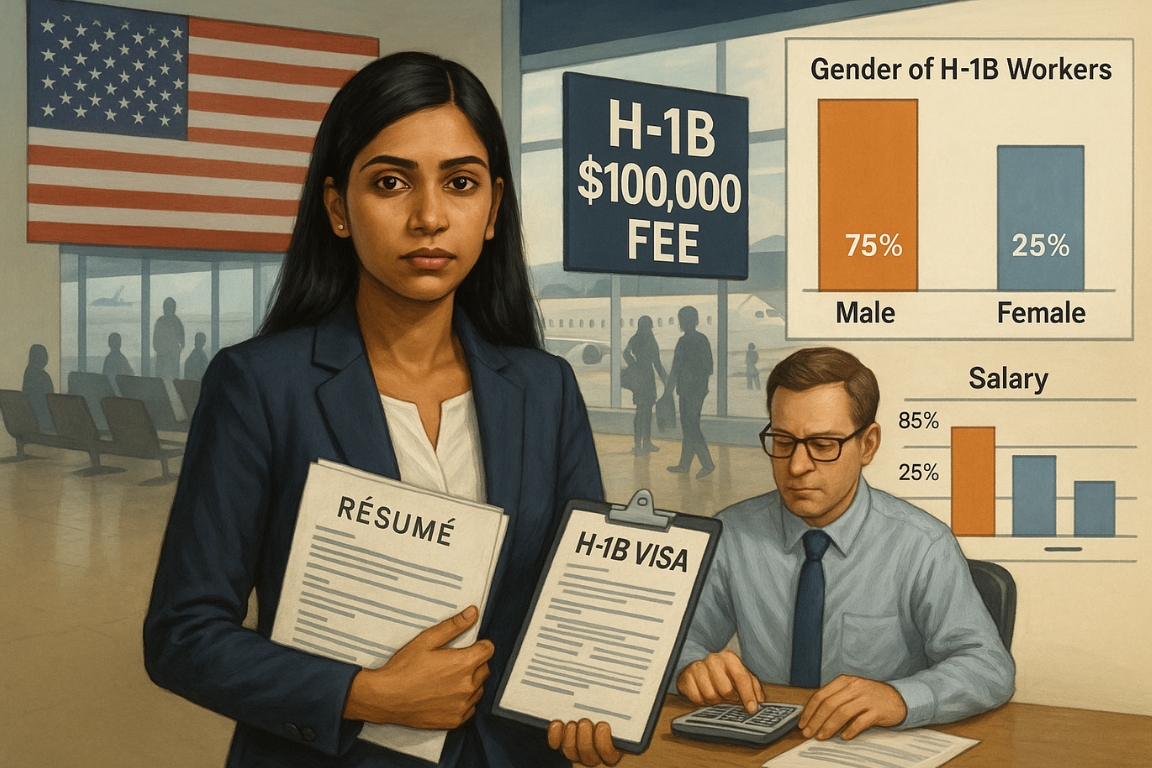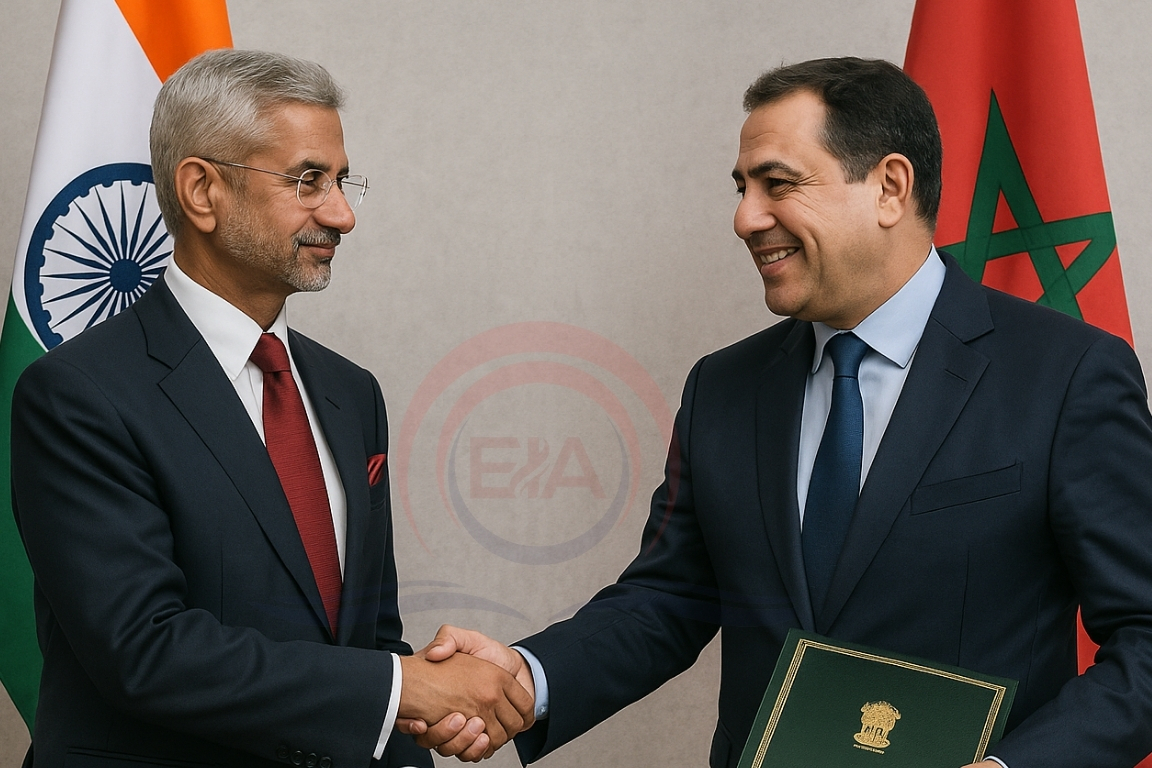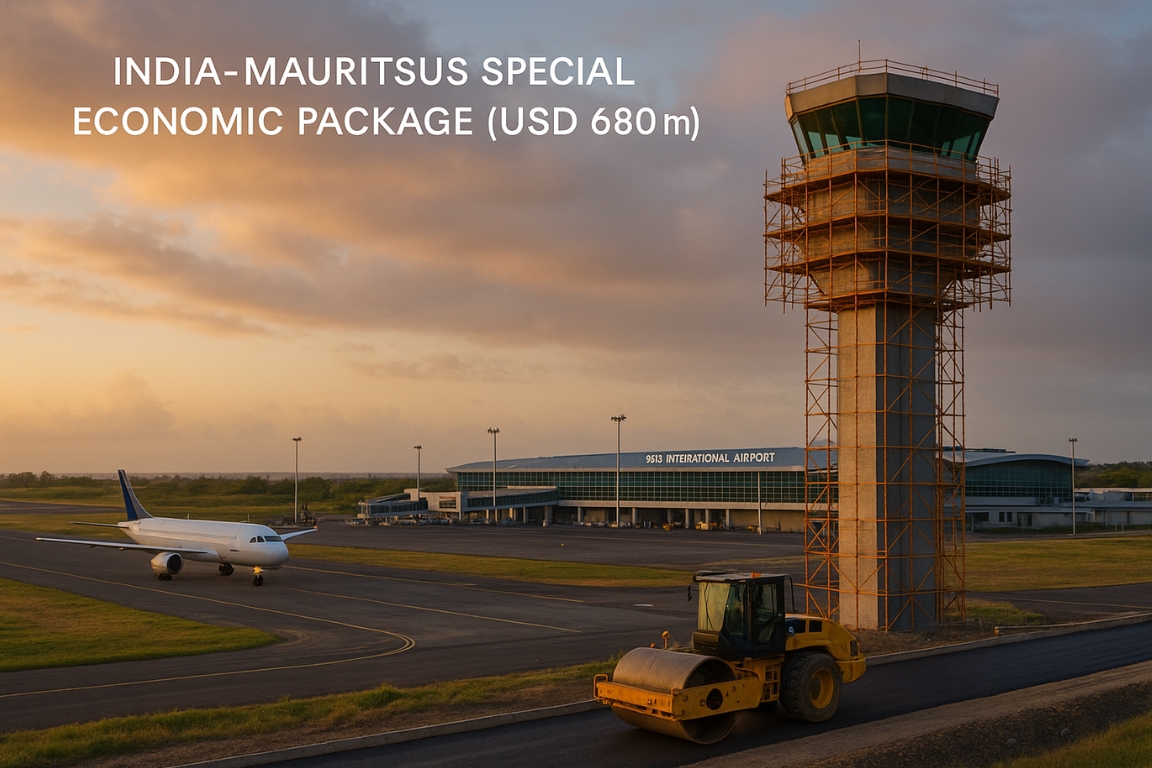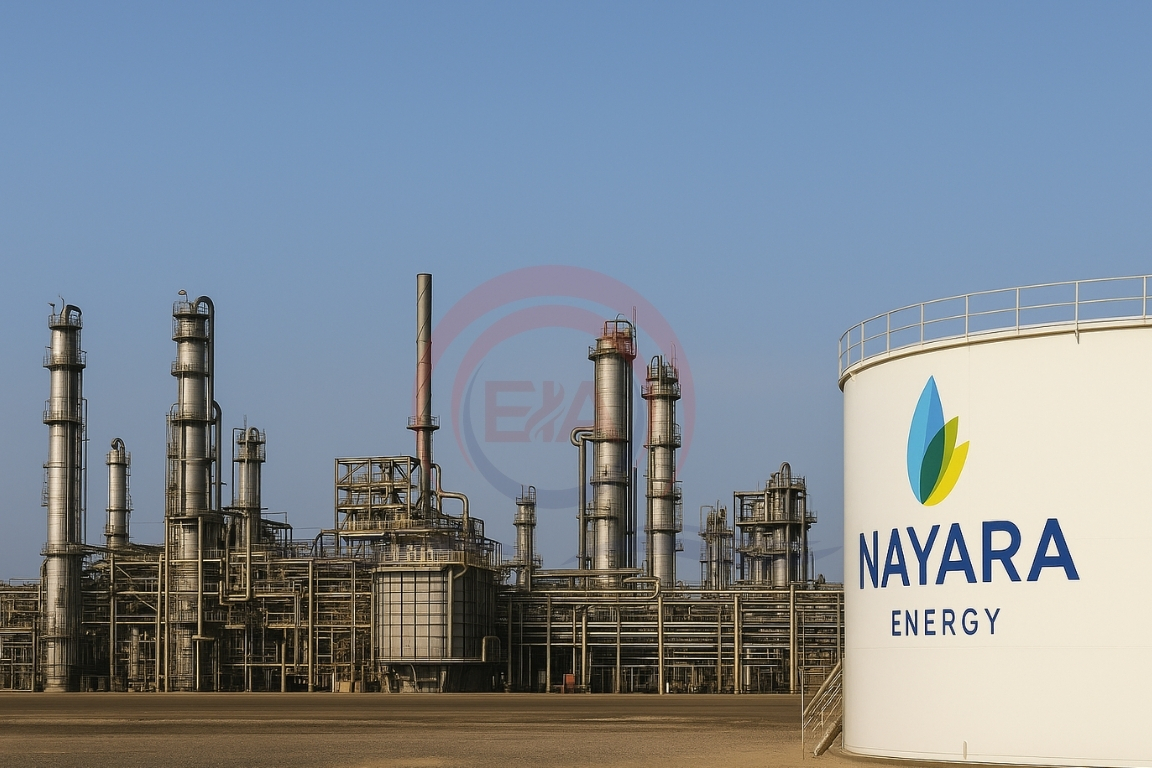The U.S. government has introduced a one-time $100,000 fee on new H-1B visa applications, a massive jump from the earlier fee of a few thousand dollars.
Background on H-1B Visas
- The H-1B visa allows U.S. employers to hire foreign workers in specialised jobs like IT, engineering, and research.
- Indians are the largest beneficiaries, accounting for nearly 70% of all approvals annually.
- The new steep fee will apply only to fresh applicants, not those renewing or extending visas.
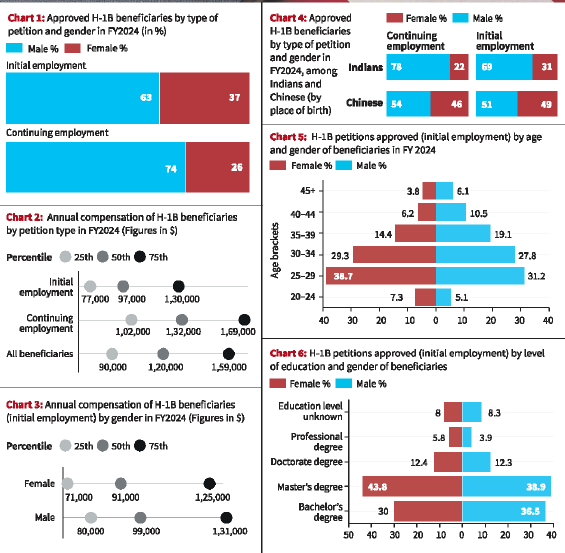
Gender and Salary Skew in H-1B Workers
- In FY24, 74% of continuing H-1B workers were men, and only 26% were women.
- For fresh approvals, women made up 37%, showing a gradual rise in participation.
- Women’s salaries are lower at every level:
- Bottom 25%: Women earned $71,000, men earned $80,000.
- Median: Women earned $91,000, men earned $99,000.
- Top 25%: Women earned $125,000, men earned $131,000.
- With such wage gaps, employers may prefer sponsoring male workers, as women’s lower pay makes the visa cost harder to justify.
Why Indian Women Are Hit Harder
- India and China together make up 83% of all H-1B workers.
- The gender gap is much sharper among Indians compared to Chinese applicants.
- 75% of Indian women approved for new jobs in FY24 were below 35 years, compared to 65% of men, meaning most are at the early career stage.
- A large share (44%) of these women hold a Master’s degree, showing high qualifications, yet face greater barriers due to cost.
Wider Concerns
- For employers, sponsoring new workers will now be more costly than extending existing ones, discouraging fresh hiring.
- This may limit opportunities for young professionals just entering the global workforce.
- The new policy risks deepening both gender inequality and economic barriers in skilled migration.
Conclusion
The $100,000 H-1B entry fee may limit opportunities for young Indian women, despite their growing numbers and higher education. It underscores issues of immigration policy, gender disparity, and access to global job markets.


